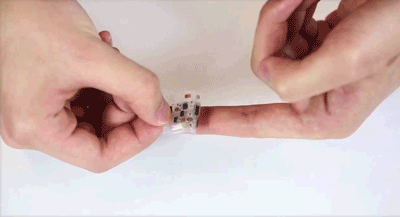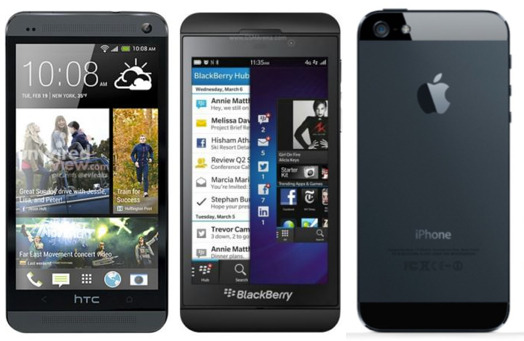I haven’t worn a watch since the year 2000 but prior to that, four or five years went by when I didn’t wear a watch. The last time I remember wearing one regularly was back at high school when my gym teacher always shouted in my ear to remind me to take it off during gym class. So after a few weeks, I decided to just dump the watch.
At first it was noticeable, not having a watch on my arm, but it didn’t take long before I got used to it. There were clocks almost everywhere I go and there’s always someone to ask for the time when a clock wasn’t around, so it stopped becoming a big deal.
Not having a watch was made even less significant when I got my first mobile phone upon starting university. The phone lasted several days on a single charge, unlike today’s smartphones, and it was always on. I didn’t have to bring a charger anywhere. A portable battery pack was unheard of, perhaps even laughable at that time.
Fast forward to 2011 when I began to stop wearing glasses and made the switch to contact lenses. The fundamental issue with both the glasses and the watch is that you simply have to take them off and put them back on from time to time depending on your activity. Maybe for some people this isn’t such a big deal, but for me it is. You can put it down to being forgetful but I’m one of those people who probably would accidentally leave his head if it wasn’t attached.
In university I had to tape a sign at the door of my apartment to remind me to carry my wallet, monthly tram/train tickets, keys, and phone. There had been countless times prior to that, and even a few after, that I had managed to leave the house without my ticket, my wallet, or my keys. I don’t recall leaving anywhere without my phone though.
Since 2010 though, I’ve managed to lose two iPhones and left one in the cab while on an overseas trip (thankfully it was returned), although I haven’t lost another one so far.
Which brings me to the growing trend in wearable electronic devices. Anyone remember those slap bands that you put on your wrists? The ones that served absolutely no purpose whatsoever other than being flashy accessories? I hadn’t seen one since the 80s until recently at a toy fair.
Anyway, the whole notion of putting something around the arm feels very unnatural and unnecessary to me regardless of the purpose. Sports bands offer measure your physical activities, track your run, and some other supposedly useful bio analytics. I’m not a runner and I don’t feel a pressing need to have my physical activities tracked and measured, no matter what anyone says.
Mobile phone makers are also trying their hands at making multipurpose armbands that not only tell the time but also serve as an extension of your smartphone. Is pulling a phone from your pocket that much of a nuisance to you? Is it such a terrible exercise to flick your mobile-phone-holding hand to see the screen that you have to put a proxy device on your arm to save you a single movement?
Sure, it may help locate your phone when you can’t find it or give you information when the phone is tucked inside your bag and you’re on a bike run or doing some other activity, but when these things run out of power around the same time as your phone, then what’s the point? Why bother?
I’ve given up wearing glasses in favor of contact lenses to save me from having to locate my glasses each time I take them off. Some of you will scold me for this but I don’t take my contact lenses unless I’m off for a swim. Even then I sometimes forget until I realized my vision was suddenly blurry upon resurfacing from the water. I take them off once in a while to clean them but they go back on soon after.
I’ve gone through about half a dozen glasses over 20 years having broken them accidentally each time. One or two even broke a number of times. Similar to my experience after not wearing watches anymore, after a few months, I’ve simply grown used to not wearing glasses and in the occasions that I had to, they felt really uncomfortable.
Which brings me to the head gear. I’ve had an opportunity to use Google Glass. Having that wrapped around my forehead is even worse than having to wear glasses. Maybe one day this sort of device will be more akin to regular glasses than the additional attachment that we’re familiar with today, and then people won’t feel that these things are too alien or too intrusive anymore. Maybe they will be embedded into future contact lenses.
In any case, these wearable gears at this point don’t really present that much of a value to most people as their creators and proponents would like you to think.
By no means am I a laggard. My entire life has been lived surrounded by electronic gadgets from game consoles to video players, laser discs, home stereo systems, portable music players, to desktop and mobile computers, to feature phones and smart phones, and I’ve even tried Oculus Rift.
Every consumer goods manufacturer will want to try their hands at making wearable devices that would work, and a handful of them will make millions from people who think that they need them. But at this point, I haven’t seen a real value out of those devices. They don’t present that much of a use other than as vanity accessories, unlike the iPhone after Apple introduced the App Store. At that point the smartphone had been around for almost ten years, all terrible devices.
Maybe we’re still at the very beginning of the wearable computer era, a time when everyone is still trying to figure things out. A time when you still would end up looking like a Borg when you wear them.
Let me know when they’ve managed to build holo projectors and the holo suite.



